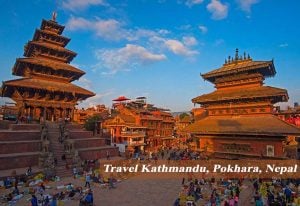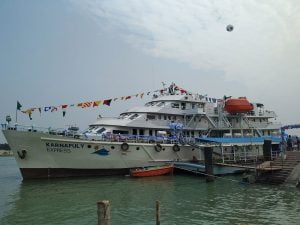Bangladesh is a riverine country. Due to having a low land, the country is flooded with rivers. All the rivers are connected across the country and eventually meet at the Bay of Bengal. Most of the sources of this water come from India, which has a higher land geographically.
The capital Dhaka, is also blessed with a few rivers and lakes. They somehow meet the demand to provide water supply to the homes of the massive population of Dhaka. However, the condition of these rivers is at stake at the moment. Since the 1980s, people from different parts of the country started coming to Dhaka for trade and a better lifestyle. Therefore, it was necessary to expand Dhaka by filling lands. Currently, the government is trying to save the rivers to make it sustainable for the future generations.
Today we’ll find out the rivers in and around Dhaka (ঢাকার আশেপাশের নদ-নদী).
- See also the Dhaka Metro Rail of Bangladesh.
1. Buriganga River:
The capital, Dhaka, has developed around the Buriganga River. It serves as the primary water supply source for the city’s inhabitants.
Starting from the west, the river streams through the south to eventually join the mighty Padma. The name ‘Buriganga’ has evolved from its primary source, the Ganges. The Ganges meets the Dhaleshwari River before combining with the Bay of Bengal. It is said that the Mughals were surprised to see the water levels of Buriganga when they first came to establish the city. Later, the link was lost and Dhaleshwari became the main source for Buriganga. The average depth of the river is 25 feet and the maximum is 58 feet.
The Buriganga is also commercially important for the capital, Dhaka. Launch and steamers sail from here to other parts of the country. This made trade and transportation much easier. In fact, the Mughals started trading in 1610 through this channel.
Today, Buriganga has lost its identity and stream. Pollution has engulfed the river heavily. The majority of those are caused by tannery wastes. Besides, people are littering the banks from the roads. Passengers are littering from launch. Even most of the sewerage lines have ended in this river.
- Travel guidelines on Taj Mahal from Dhaka City.
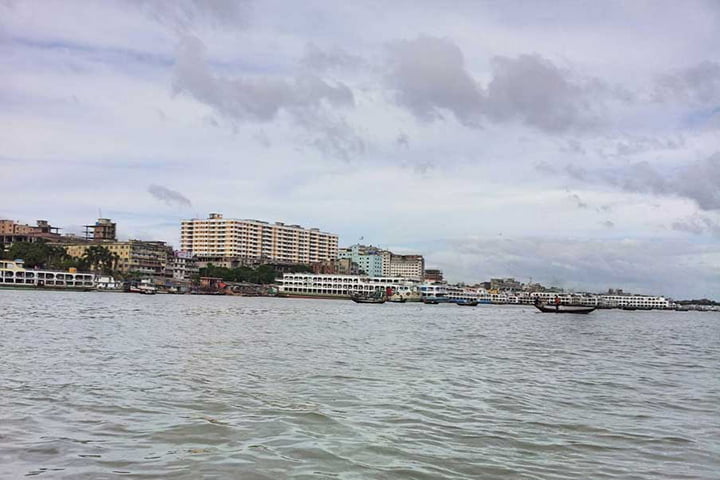
2. Turag River:
This river is an upper stream of Buriganga. It inherits from the Bangshi River, flows through Gazipur, and finally ends at Buriganga. The river is transportable at any time of the year. ‘Tongi Khal,’ a long canal inside the city, connects this river.
The second biggest Islamic assembly after Hazz, ‘Biswa Ijtema’ was held at the bank of the Turag River. This river is massively famous for that reason.
The river has lost its color due to pollution. Besides, repeated land-fillings occur in this river. Illegal construction is a common practice. As a result, the life of this river is in serious threat. The government is trying hard to widen the river by evicting unauthorized dominance.

3. Balu River:
This river originates from the Turag River and moves through different swamps and canals before meeting Shitalakhya at Demra, Dhaka. The river carries flood water during rainy season from Shitalakhya and Turag River.
It serves local drainage and groundwater to the city. Small boats are accessible to cross the River.
- See the travel guide to Nepal from Dhaka.

4. Sitalakhya River:
Shitalakhya is one of Bangladesh’s largest rivers, about 110 km long and 300 meters wide at maximum. It flows from Brahmaputra and finally merges with Dhaleshwari. Starting from the west, it flows toward the east to the city of Narayanganj. The average depth of this river is 33 feet and the maximum is 70 feet.
- Don’t forget to check the Zinda Park & Panam City travel guide on Narayanganj.
The Mughal Capital of this region was Sonargaon. It lay at the bank of Shitalakhya. Several historical forts and mosques are still there by this river. Even today, the weaving and garment industry are based on the banks of this river. The only jute mill of the country which is Adamjee Jute Mill, has also developed here. Earlier, this river played a significant role in the Muslin industry.
A river port is also here by the Shitalakhya at Narayanganj. Launches, steamers and boats start from here for the different parts of the country. Currently, a container terminal is under construction for shipment.
The river also suffers from pollution. Most of the industries have grown around this river, Thereafter, the waste products are dumped in the river water.
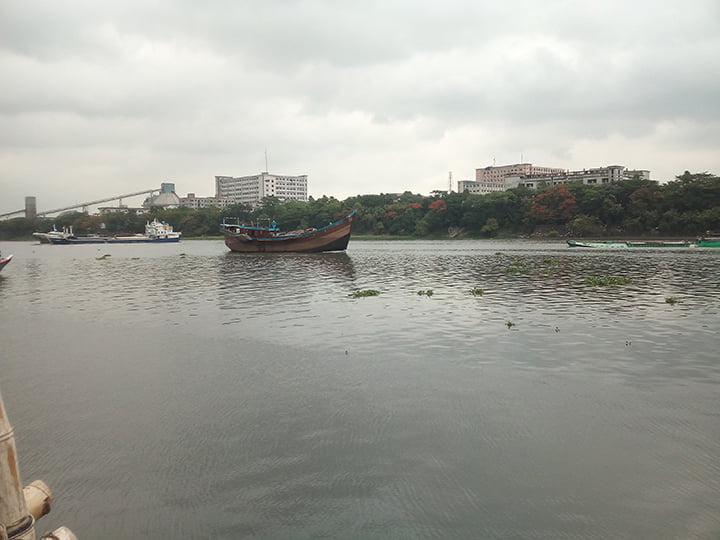
5. Dhaleshwari River:
One of the country’s largest rivers, Dhaleshwari, has a length of 160 km. Its average depth is 122 feet, up to 265 feet in some places.
A large section of this river is found in Tangail district. It’s in the Dhaka division and a 2-hour drive from the capital. This river has a very complex route and branches. It has two branches and is a distributary of the Jamuna River. The northern branch which is at the north of Manikganj, is called the Dhaleshwari River. Subsequently, the other part, called the Kaliganga River, flows through the southern part of Manikganj. Then, the merged flow falls into the Shitalakhya at Narayanganj. Once, the Buriganga used to be the distributary of this river. The combined flow finally joins the Meghna River. Slowly, the Padma took over its present course.
- Let’s learn about the top Hindu temples in Bangladesh.
This river also has pollution to a great extent. Liquid waste from Savar Tannery goes here without being treated properly.
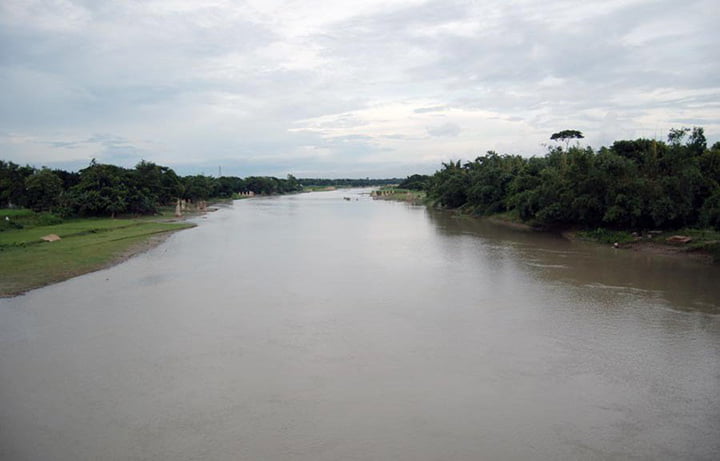
Most of the land in Bangladesh, the largest delta in the world, is made up of silt. It is the silt that has played a role in maintaining the fertility of the land for centuries. Most of the land in Bangladesh, the largest delta in the world, is made up of silt. Since then, the river (বাংলাদেশের নদ-নদী) has been carrying the silt of land formation to retain the fertility of the land and is still doing so. Thousands of years after the formation of this land, the river still plays a major role in various economic activities in people’s lives. The silt has played a role for centuries.
Please share the article on your favorite social media if you like it. To add any missing information, inform us in the comment section. Thanks for staying with Travel Mate Bangladesh. 🙂


